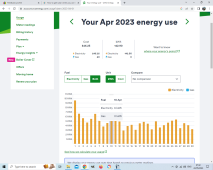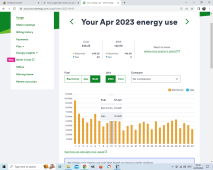The math disagrees with you. Where I live in zone 3a Texas, going from code minimum r13 walls to even r1000 walls and roof will save less than $100 year. This of course assumes you have regular windows which are about r2 to r3.
Sealing your house air tight and using an erv would save approx $0 per year.
This is an extremely unpopular opinion but I'm ready to have this debate and can back it up with real numbers- code minimum plus solar(diy) is a far better value proposition than passivhaus or superinsulation
If I were a "Code" type, I wouldn't have done what I have...
And you seemed to miss the point "Codes" are absloute MINIMUMS. So I guess if you want the absloute minimum, you can go "Code" and nothing more.
What I saw in Texas, and everyplace else the grid goes out, the home is freezing or overheated in a few hours.
My home will never get below 63°F or above 80°F. We reached 80°F inside while the concrete was curing and there weren't any windows yet, about 95°-98°F outside temp...
Much easier to heat from 63°F or cool from 68°-70°F than 20s to 100 degrees Fahrenheit.
Is that in your "Code" book?
So there's that...
While we regularly see air temps in the 90°-100°F range... and we spend a lot of nights in the 20°F range, and below.
Ground temp is 63° to 68°F on average. How does that factor into "Code" exactly?
Ever hear of Geo-Thermal? Heat banking? It's fairly popular, you can Google it and learn about it pretty easy.
Ever hear of a Root Cellar?
Natural floor for high humidity, like unprocced produce.
I'm not a potato or squash, so I'm not the biggest fan of high humidity, so concrete floor...
Ever hear of underground cold/dry storage?
Your food has, there is a reason big companies turn rock mines, tunnels, etc into cold/dry storage.
They go deeper and get temps lower, better for food than people, but the same principal.
My humid and dry cold storage spaces for produce (farmer!) were my tests to see if it would work, and how I figured out how deep the house needed to be.
You know, Greeks, Romans, Egyptians, Norsemen/Vikings figured it out forever ago... It still works!
Insulation "Codes" didn't change any of that, just like gravity still works after the invention of pumps, and "Codes" didn't make all that stop working.




